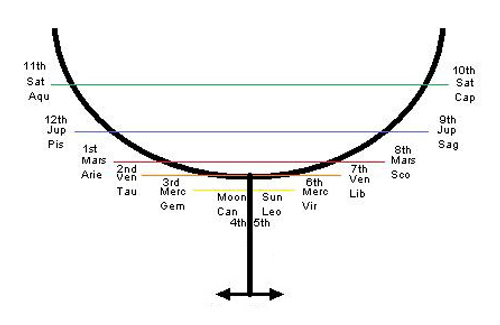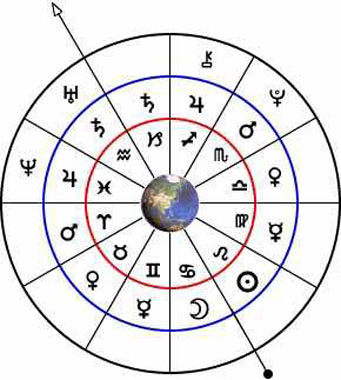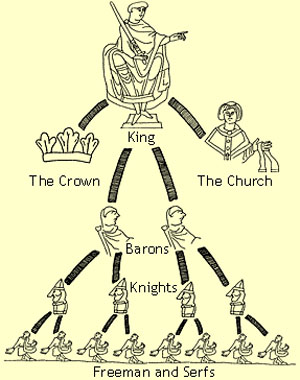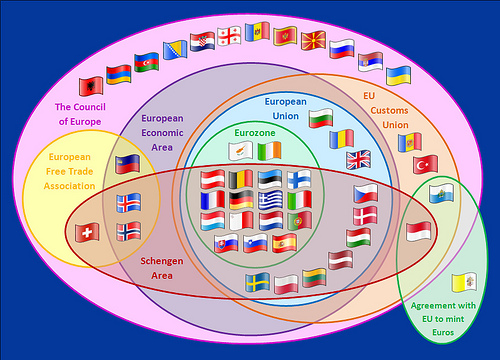By
John Townley
One
of the more elaborate – and intractable – rule sets
in
astrology is that of rulerships.
In order to determine the
strength/importance
of a planet, you must judge where it fits in a rigid hierarchy made up
when
there were only seven planets being considered. I take it with a
serious grain
of salt, and so should you. Here’s why:
The
traditional way of treating rulerships goes back to a
concept of the universe in which our planetary system was not viewed as
one of
many, but the only one, the whole universe itself. In that system, the
seven visible
planets
were the lords of all activity and like humans had surrounding fiefdoms
over which
they ruled and had possession. Looked at that way, the chart becomes
like a set
of nation-states through which the planets travel, sometimes in their
own
kingdoms, sometimes crossing borders into kingdoms ruled by either
allies or
enemies, where they have less authority. And by totaling up who has the
most
and who has the least, and where it finally leads (as in a clever but
unhelpful,
tail-chasing “dispositor tree”) it could be
determined who the most powerful
magnate was, and who the weakest, who “ruled the
chart” and who owed what to
whom in the end and who didn’t. It is really astoundingly
anthropomorphic, and
tagged to a very specific historical political system.
 Original 7-planet
rulership tree was totally symmetrical, with inner
inconsistencies ignored in favor of overall structure.
Original 7-planet
rulership tree was totally symmetrical, with inner
inconsistencies ignored in favor of overall structure.In
a population of seven planets and twelve signs, it was
very neat and symmetrical, with Moon and Sun holding sway over
neighbors Cancer
and Leo, and then each planet in order of speed having two kingdoms on
either
side, progressing outward from the middle: speedy Mercury over Gemini
and
Virgo, sauntering Venus
over Taurus and Libra, determined Mars over Aries and Scorpio,
leisurely Jupiter over Pisces
and
Sagittarius, and deliberate Saturn tying up the opposite ends with
tangent
Aquarius and Capricorn.
Hierarchical and symmetrical, this was the celestial tree of life
– the whole
universe in its perfectly-formed completeness. (see illustration above)
But
in modern times, when politics below have proven a lot
more fluid and there are three or more extra heavenly bodies above to
take
into consideration, our understanding of rulerships has evolved. Now it
is
really more about general (and frequently overlapping) similarities
than any
fixed and circumspect set of influences. It’s rather like
taking a closer look
at modern nation-states and finding that they aren’t
totally homogeneous, but made up
of separate and often border-crossing ethnic minorities that may be
quite
different, despite being officially part of the same set. As our view
gets more
inclusively democratic, it also gets less definitive from moment to
moment.


As new planets arose, the plan began
to lose its balance, and relevance, as did similar, rigid feudal social
structure tree.
Thus,
Mercury and its qualities of mental construction,
attention to specifics, and changeability seems to share qualities with
Gemini
(especially) and Virgo (perhaps less so). Mars clearly shares energy
and
aggressiveness with Aries, but not so much with more withdrawn
and
isolated (though powerful) Scorpio, while Pluto seems actually a bit
more
similar to that dark sign. Venus shares a love of opulence with Taurus
(but not its
propensity
for slowness) and an inclination to beauty and balance with Libra,
though not
Libra’s aggressive and applecart-upsetting inclinations.
Jupiter certainly has
the broad shoulders and inclusiveness of Sagittarius (though maybe not
so
rough-hewn), but doesn’t seem to have much in common with Pisces
at all, while
Neptune seems made to the task. Saturn and Capricorn seem a perfect
match, but
Aquarius though sometimes cold is far from conservative and stodgy, so
Uranus
would seem to share some of its more unusual and inventive side. Even
Sun and
Moon aren’t entirely perfectly matched to their signs, as the
Sun is constant
and reliable, whereas Leo doesn’t always hold up to that
standard, and
the Moon is far
too retreating and fickle for a season-dominating cardinal sign, though
it is
similar in other ways, such as sensitivity and empathy.
Comfort
is key
Still,
it’s important to consider whether a planet is
comfortable in a sign, as when it’s not, it is for all
practical purposes
partly debilitated. Saturn flounders in Pisces and Cancer, while being
utterly
overbearing in Aries, for instance. Neptune loses its essential staying
power
in Aries, while Uranus drowns in Pisces (where Mercury becomes
befuddled and
Mars loses focus), Jupiter in Capricorn is shorn of much of its
breadth, and so
on. But because all these discomfitures are partial, there’s
no hard and fast
rule, though the traditional set of rulerships, exaltations, and falls
sometimes does as well as
any. It
really depends on what side of the planet you are looking at and
whether that,
specifically, is helped or hurt by the sign it’s in. Even
neat subsets like
mutual reception don’t have consistent, or perhaps any,
meaning, depending on
where they fall. Mercury in Taurus and Venus in Gemini are in mutual
reception, but so is Mercury in Libra and Venus in Virgo. In the
first, Venus fares
better, in the second, Mercury does. The same sort of irregularity
applies for
all the rest, and more so when you throw in the outer planets.
Basically, it
means each is showing some uncomfortable and uncharacteristic qualities
of the
other, and is having to fight them.

Rulerships these days are more like EU
states, partly homogenous, partly overlapping, depending on your
view...
So
in the end, it’s a new ball game as far as rulership
goes, and it might be better to use a variable weighting point system
(as Lilly
did), but one built to your own specifications and including whatever
your
favorite outer (and newer-discovered) planets/asteroids might be
– and then
adapt that to the particular situation you are looking at. Planets tied
by
easy, reinforcing aspects will make the most out of being in a
less-than-hospitable sign, whereas a hard aspect will simply reinforce
the discomfort of its position. Benefic or malefic transits and
progressions
will have
a similar, but more temporary, effect. And all of that is only as
relevant as the planet itself is to the particular issue you are
examining.
When
traditional astrologers (meaning Classical and
Renaissance) codified rulerships, they did it as a combination of
observed
similarities shoehorned into a formal structuring of the universe as
they thought
they knew
it. What we think we know about cosmology has greatly changed, but the
effects
of the planets have not…we understood it imperfectly then,
possibly equally-so
now – so although the context has changed, fortunately our
ability to
sense the
palpable reality has not, and that
is what we should be listening to.

